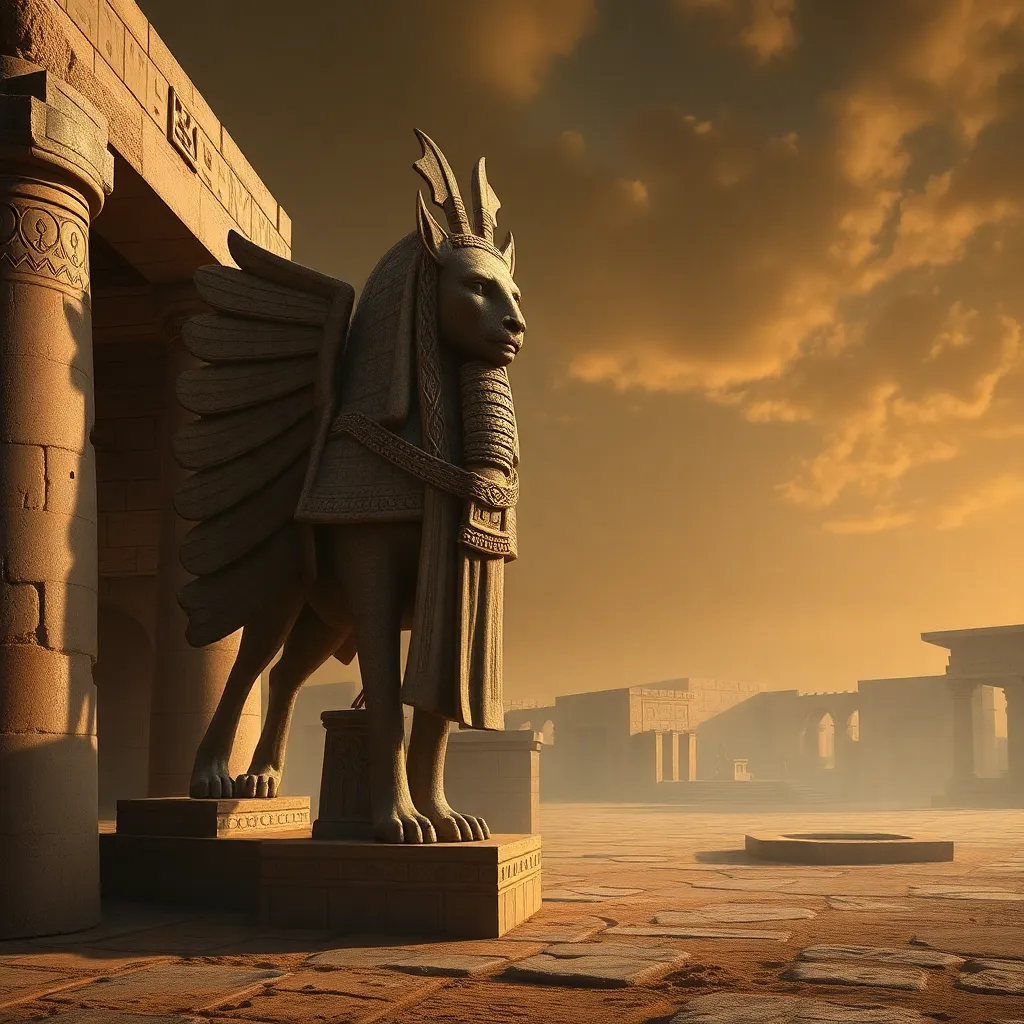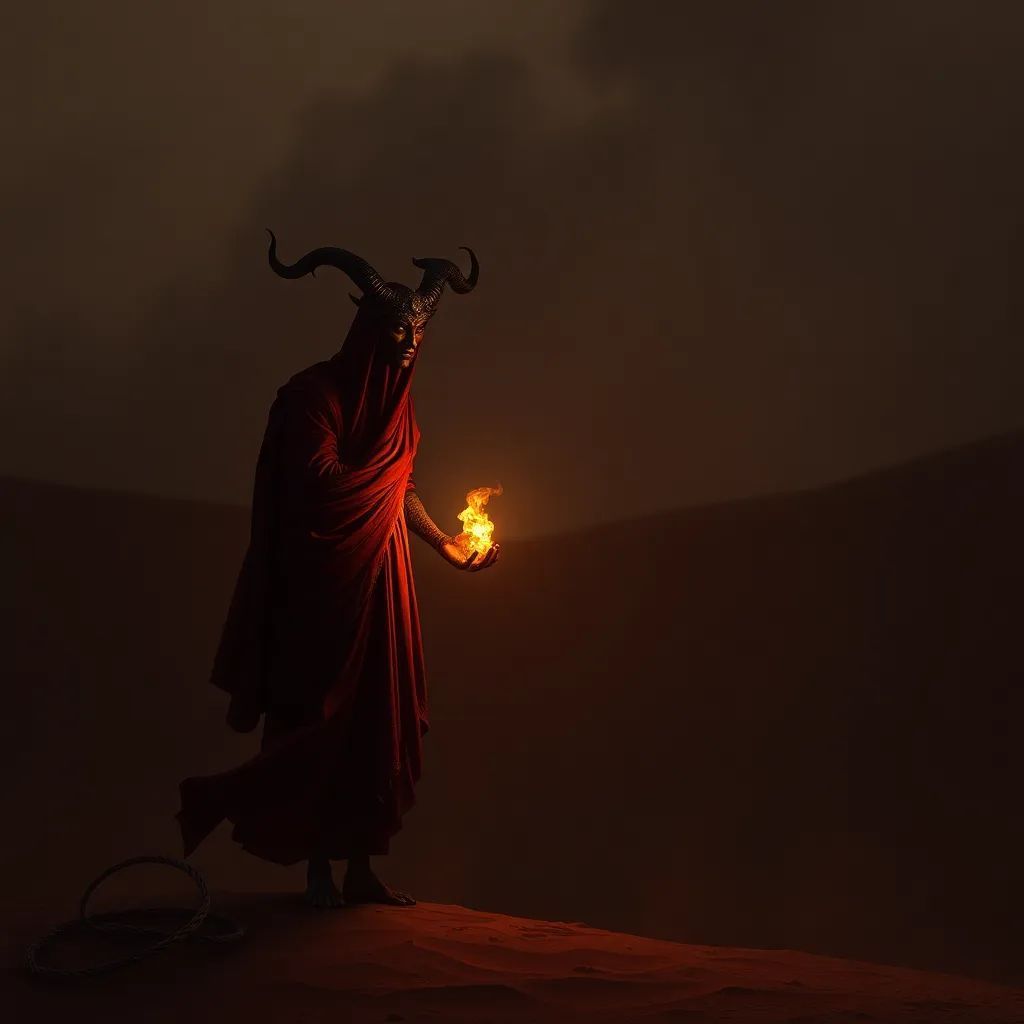Uruk’s Guardian: Unveiling the Lamassu’s Significance in Sumerian City Planning
I. Introduction
Uruk, one of the most pivotal cities in the Sumerian civilization, stands as a testament to the ingenuity and cultural sophistication of ancient Mesopotamia. Established around 4000 BCE, Uruk was a bustling urban center characterized by its monumental architecture and complex societal structure.
At the heart of Uruk’s architectural marvels lies the Lamassu, a mythical creature that has captivated historians and archaeologists alike. Defined as a winged bull or lion with a human head, the Lamassu serves both as a protective spirit and a symbol of power. This article aims to explore the significance of the Lamassu in the context of urban planning within Uruk, highlighting its multifaceted roles in Sumerian society.
II. Historical Context of Uruk
The rise of Uruk was marked by significant advancements in various fields, including trade, governance, and the arts. As one of the first major urban centers, Uruk laid the groundwork for the development of cities in ancient Mesopotamia.
Culturally, the Sumerian period saw remarkable architectural innovations, including the construction of ziggurats and city walls. These structures not only served practical purposes but also embodied the spiritual and political aspirations of the Sumerians.
Religion and mythology played a vital role in Sumerian society, influencing daily life and governance. The pantheon of gods and goddesses, especially the protective deities, was central to the Sumerians’ understanding of their world, shaping their beliefs about power, protection, and the afterlife.
III. The Lamassu: An Icon of Protection
The Lamassu is characterized by its unique features: a lion or bull’s body, eagle-like wings, and a human head. This hybrid form symbolizes strength, protection, and divine authority, embodying the qualities that were highly valued in Sumerian culture.
Mythologically, the Lamassu is believed to have originated from ancient Near Eastern traditions, with its roots in the protective spirits that guarded temples and palaces. In the context of Sumerian culture, the Lamassu served as a guardian figure, warding off evil and ensuring the safety of the city and its inhabitants.
In Mesopotamian architecture, Lamassu statues were often placed at entrances, signifying their role as protectors of sacred spaces. Their imposing presence was intended to intimidate adversaries while instilling a sense of security among the citizens.
IV. The Architectural Placement of Lamassu
Lamassu installations were commonly located at strategic points throughout Uruk, especially at the entrances of city gates, temples, and palaces. This deliberate placement underscores their importance in the urban landscape.
- City Gates: Lamassu were often positioned at the gates of the city, serving as the first line of defense against invaders.
- Temples: Within religious spaces, Lamassu symbolized the divine protection of the gods over the people.
- Palaces: Their presence in royal compounds reinforced the connection between kingship and divine endorsement.
The symbolic significance of these placements is profound, as they represented the intersection of urban planning, spirituality, and authority. The Lamassu not only marked the entrances to important structures but also conveyed a message of strength and protection to all who entered.
V. Lamassu as a Reflection of Power and Authority
The association between the Lamassu and kingship is evident in various inscriptions and artworks from the period. The Lamassu was considered a divine protector of the king, reinforcing the ruler’s authority and legitimacy.
In Uruk, the visual narrative of power was intricately woven into the urban fabric, with Lamassu sculptures serving as potent symbols of strength. The presence of these guardian figures in public spaces emphasized the king’s role as a mediator between the divine and the mortal realms.
Numerous inscriptions depict the Lamassu alongside royal insignia, illustrating their importance in the visual representation of authority. These artworks not only glorified the kings but also served to reinforce the societal hierarchy in Sumerian culture.
VI. Urban Planning and the Lamassu’s Influence
The integration of Lamassu into the overall layout of Uruk reflects a sophisticated approach to urban planning. Their strategic placement contributed to the city’s identity and reinforced civic pride among its inhabitants.
Lamassu played a crucial role in shaping community cohesion, as their presence fostered a sense of shared identity and protection among the citizens. This integration of mythological figures into urban design set a precedent for subsequent Mesopotamian city planning and architecture.
Over time, the influence of Lamassu can be observed in later civilizations, where similar guardian figures were employed to convey power and protect urban spaces.
VII. Archaeological Discoveries and Studies
Key archaeological sites in Uruk, such as the Anu Ziggurat and the White Temple, have revealed numerous artifacts and remnants of Lamassu figures. These discoveries provide valuable insights into the role of Lamassu in urban design and Sumerian architecture.
Recent research has focused on understanding the symbolic and practical functions of Lamassu within the urban context. Studies have highlighted their significance in reinforcing social order and governance in Sumerian cities.
Preservation efforts are vital to maintaining the legacy of the Lamassu, as these figures continue to inform modern studies of ancient urbanism and mythology. Their enduring presence in archaeological narratives emphasizes their importance in understanding the complexities of Sumerian civilization.
VIII. Conclusion
In conclusion, the Lamassu stands as a significant figure in the context of Sumerian city planning and urban design. Its role as a guardian figure, symbol of power, and element of architectural integrity underscores its importance in the ancient urban landscape of Uruk.
The enduring legacy of the Lamassu in cultural memory reflects the intersection of mythology, architecture, and urbanism in ancient societies. As we continue to explore the depths of Sumerian civilization, the Lamassu remains a powerful symbol of protection and authority, reminding us of the rich tapestry of human history.



